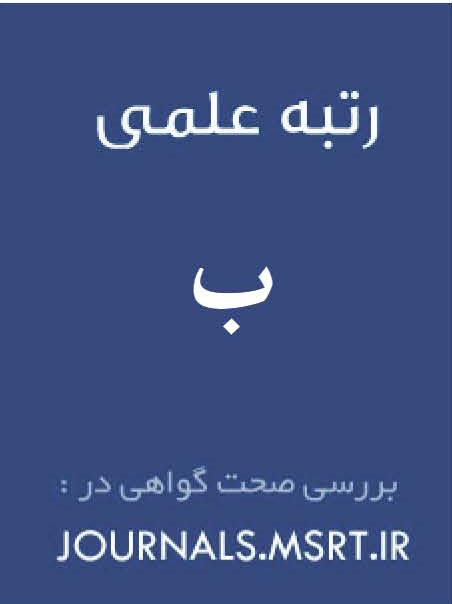Presentation of a Qualitative Model of Transformational Leadership with Emphasis on the Components of Quality of Work Life and Employees’ Professional Commitment
Keywords:
employee professional commitment, quality of work life, Transformational leadershipAbstract
The main objective of the present study is to propose a qualitative model of transformational leadership with emphasis on the components of quality of work life and employees’ professional commitment. The research method applied in this study is qualitative, and to answer the research question, the content analysis method was employed. The statistical population consisted of experts in management who have conducted research in the field of organizational behavior. The sampling method was snowball, through which 15 individuals were interviewed, with theoretical saturation reached at the 13th interview. The data collection tool was semi-structured open interviews. To assess the validity of the model, expert validation was applied. The findings of the study indicated the identification of three main dimensions—content, structural, and contextual—for transformational leadership, along with more than 130 related subcomponents. The content dimension included: inspirational motivation, emotional influence, intellectual stimulation, individualized consideration, organizational justice, trust-building, and empathy. The structural dimension included: process transparency, performance evaluation system, delegation of authority, structural coherence, and employee-support policies. The contextual dimension included: communication climate, organizational support, organizational culture, employee participation, and level of job stress.
Downloads
References
Alavi, S., Sanaei, A., & Dehghani, M. (2021). The Effect of Transformational Leadership on Organizational Excellence with the Mediating Role of Job Satisfaction, Organizational Justice, and Organizational Commitment: A Case Study of Esfahan Steel Company. Scientific Quarterly Journal of Human Resources and Capital, 1(2), 33-55. https://www.hureca.ir/article_142345.html
Amor, M., Vazquez, J., & Faína, J. (2019). Transformational leadership and work engagement: Exploring the mediating role of structural empowerment. European Management Journal, 3(9), 1-22. https://www.sciencedirect.com/science/article/pii/S0263237319300775
Arash, Mandana, Qorchian, Nader, G., Jafari, Parivash, Jamali, & Akhtar. (2022). Identification of Dimensions and Components for Enhancing and Sustaining Professional Commitment among Nursing Students: Development of a Conceptual Model. 11(1), 49-65. https://www.sid.ir/paper/1004992/fa
Atishree, B., Mishra, S., & Kumar, T. (2021). Analysis of strategic leadership for organizational transformation and employee engagement. Materials Today: Proceedings, 3(9), 23-44. https://www.sciencedirect.com/science/article/pii/S2214785320334283
Eliyana, A., Ma, A. S., & Muzakki, M. (2022). Job satisfaction and organizational commitment effect in the transformational leadership towards employee performance. European Research on Management and Business Economics, 25(3), 144-150. https://doi.org/10.1016/j.iedeen.2019.05.001
Firouzyar, S., & KiaKojouri, D. (2013). Identification of Structural Restricting and Driving Factors of Development of Corporate Entrepreneurship (CE): A Case Study. Journal of Entrepreneurship and Innovation Management, 2(3), 1-16. https://dergipark.org.tr/en/pub/jeim/issue/52619/692670
Foster, C. (2019). Investigating professional quality of life in nursing staff working in adolescent psychiatric intensive care units (PICUs). The Journal of Mental Health Training, Education and Practice, 14(1), 59-71. https://doi.org/10.1108/JMHTEP-04-2018-0023
Hosseini Nassab, D., & Aghi Niya, A. T. (2022). A study of the relationship between the quality of the staff work life with their productivity in Tabriz. JOURNAL OF INSTRUCTION AND EVALUATION, 4(15), 25-46. https://www.academia.edu/download/58810029/20170301053014-10100-74
Kiakojouri, D. (2024). Analysis of the relationships among Organizational Culture Indicators Using the DEMATEL Method at the Islamic Azad University in the West of Mazandaran Province. Journal of Dynamic Management Business Analysis, 2(4), 1-12. https://doi.org/10.61838/dmbaj.2.4.1
Liu, W., Wei, W., Choi, T. M., & Yan, X. (2022). Impacts of leadership on corporate social responsibility management in multitier supply chains. European Journal of Operational Research, 299(2), 483-496. https://doi.org/10.1016/j.ejor.2021.06.042
MirTaghian Rudsari, M., & Kiakojouri, D. (2016). Students' Attitudes to the Effectiveness of the Factors Affecting the Development of E-Learning (Case Study: Imam Khomeini Marine Science University in Nowshahr). Journal of Teaching in Marine Science, 3(5), 51-66. https://www.sid.ir/paper/262054/en
Moradi, M., & Khalili, M. (2014). The Impact of Professional and Organizational Commitment on Professional-Organizational Conflict between Nurses and Paramedics and Its Role in Human Resource Performance. Organizational Culture Management, 15(2), 419-443. https://jomc.ut.ac.ir/article_62529_4019f7e33c74dca5ddb128c4ed4caa03.pdf
Moradi, M., & Khalili, M. (2021). Organizational professional conflict among nurses and healthcare workers and effect on human resource performance. Organizational Culture Management, 51(2), 419-443. https://jomc.ut.ac.ir/article_62529_en.html
Peyrovani, L., & Zade, M. A. (2022). The relationship between professional ethics and the quality of working life and employee productivity Mother and Child Hospital in Shiraz. https://jhc.mazums.ac.ir/browse.php?a_id=718&slc_lang=en&sid=1&printcase=1&hbnr=1&hmb=1
Rao, P. K., & Venugopal, P. (2022). Perceptual factors in quality of work life of Indian employees. Paradigm, 13(1), 104-109. https://doi.org/10.1177/0971890720090113
Sajadi, S., Kiakojouri, D., & Hatami, G. (2012). The Relationship Between Anxiety and Difficulties in Emotion Regulation with General Health and Psychological Hardiness in Students of Islamic Azad University. Indian Journal of Fundamental and Applied Life Sciences, 2(3), 117-125. https://www.cibtech.org/J-LIFE-SCIENCES/PUBLICATIONS/2012/Vol%202_No._3/17-014...Sajadi...The...Relationship...Tonekabon.pdf
Shafer, W. E., Simmons, R. S., & Yip, R. W. (2022). Social responsibility, professional commitment and tax fraud. Accounting Auditing and Accountability Journal, 29(1), 111-134. https://doi.org/10.1108/AAAJ-03-2014-1620
Downloads
Published
Submitted
Revised
Accepted
Issue
Section
License
Copyright (c) 2025 Majid Shabani (Author); Nabiollah Mohammadi; Mehran Mokhtari Bayekolaei, Javad Gilanipour (Author)

This work is licensed under a Creative Commons Attribution-NonCommercial 4.0 International License.

